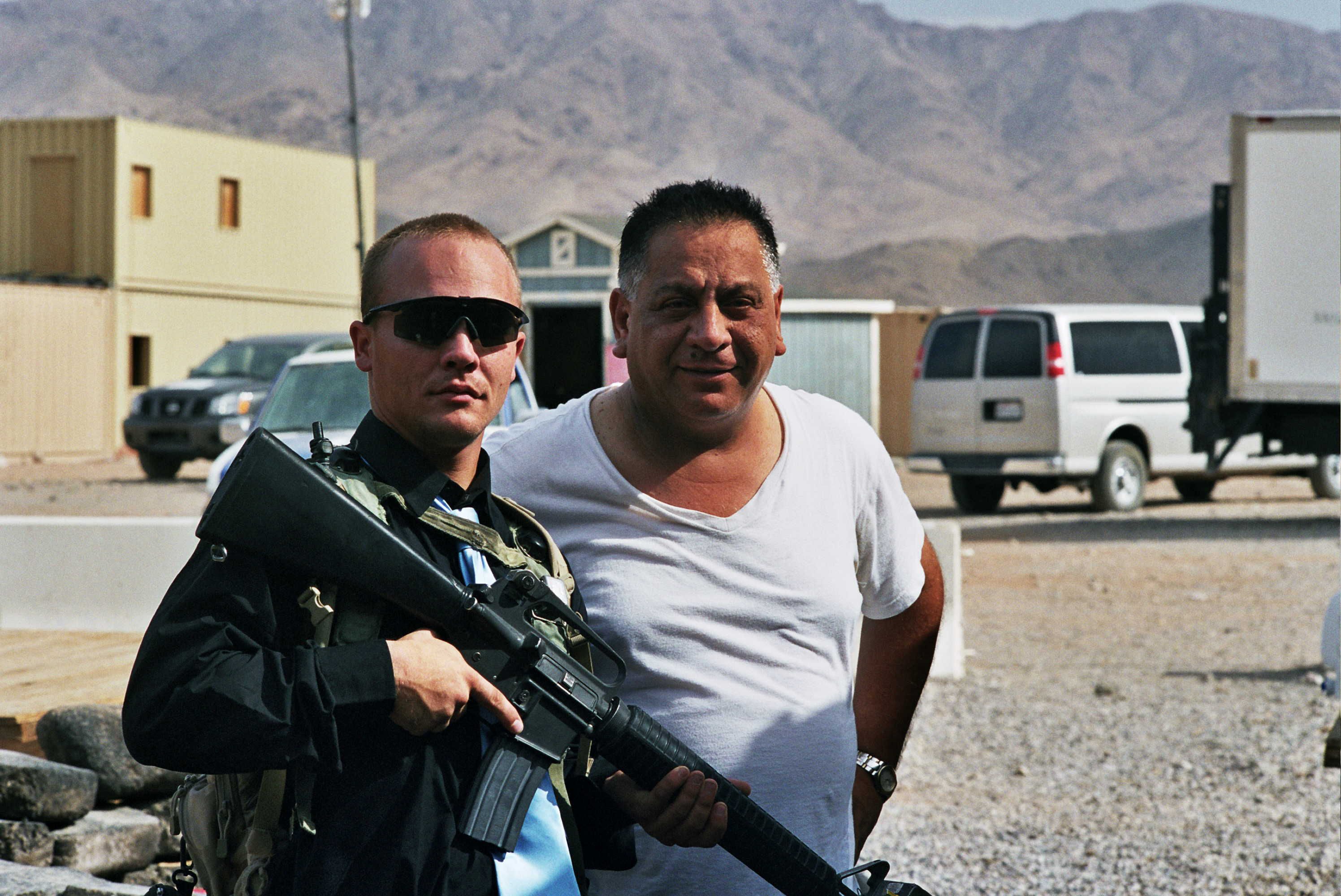|
Reviews of Recent Independent, Foreign, & Documentary Films in Theaters and DVD/Home Video
A burned-out car; a mosque surrounded by an arid, mountainous landscape; a funeral procession with wailing mourners: images of the war in Iraq have long become familiar, almost iconic, by now, but these scenes from the documentary Full Battle Rattle were filmed nearly 8,000 miles away from the fighting. At Fort Irwin in the Mojave Desert, the U.S. Army has set up a one-billion-dollar National Training Center, where in a three-week-long role-play a battalion occupies an Iraqi village disintegrating into civil war—the final stop before deployment—and where everyone’s an actor. Several white-bread officers play insurgents, with maybe too much gusto, in order to think like the enemy, and among the 1600 “players,” 250 native Iraqi, many U.S. citizens, form the nucleus of an Iraqi town, “Medina Wasl,” the opposite of a Potemkin village. If anything, this is the nightmarish Iraq fully realized, with religious tension, the kidnapping and execution of the deputy mayor’s son, and the well-armed insurgency interwoven among the townspeople. The Iraqis are given back stories and character motivations, and all participants are harnessed with high-tech gadgetry, laser tags that detect whether one has been injured or killed in the simulated battles and explosions. And death does come to the battalion: a funeral is held—the corpse is not real, but the tears are. The more the players throw themselves into their roles, the more the viewer is slowly drawn in. It’s a bit like watching a making-of DVD special feature, or a film within a film. One moment a crowd demonstrates against the occupation, and then in the next, it takes a break, lounging around craft services like film extras. But is it any different from other related films? To a certain extent, yes. Gone are the days of the U.S. government’s myopic planning and vision, so well chronicled in last year’s No End in Sight. Unlike the insular mentality of 2004’s Gunner Palace, there’s a strong acknowledgment for the need to reach out to Iraqis—hearts and minds and all. But the training is a work in progress; one army spokesman stresses the importance for soldiers to come into contact with the people who actually speak “Iraqi.” With
Murphy’s Law serving as the training’s governing principle, the question
most likely to be raised is, why would the military cooperate with the
filmmakers? Some of the American actions, inadvertent or not, will
produce snickers, although one officer’s take on the acting method—to
feel sadness, think of your dead dog—isn’t that far off the mark from
what Lee Strasberg taught. And to simulate a suicide bombing,
prosthetics with horrific injuries have been manufactured, and life-like
mannequins are treated like in-coming wounded. Whatever the state of
today’s military, it is apparently very well endowed. But the
simulations are not the real thing, of course. Ultimately, the film only
offers limited insight into the training’s success, ending with the
battalion flying off to Iraq, the fate of the profile servicemen
unknown.
Kent Turner
|

